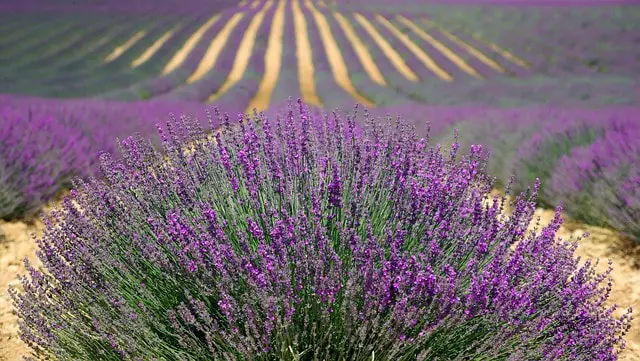Lavender plants are known for their fragrant and beautiful flowers, making them a popular choice for gardens and homes alike. However, even with the best care, a lavender plant can still begin to deteriorate and die. If you notice that your lavender plant is dying, it is important to take action quickly to save it.
Identifying signs is the first step to save a dying lavender plant. Some common signs include yellowing leaves, wilting stems, and a lack of new growth.
Understanding the causes of lavender plant deterioration is also important in preventing future problems. Overwatering, poor soil conditions, and pest infestations are just a few of the possible causes of a dying lavender plant.
Key Takeaways
- Identifying signs of a dying lavender plant is crucial in saving it.
- Understanding the causes of lavender plant deterioration can help prevent future problems.
- Reviving a dying lavender plant requires proper care and attention.
Other top posts you shouldn’t miss on:
Identifying Signs of a Dying Lavender Plant

Lavender plants are known for their beautiful, fragrant flowers and their ability to attract pollinators to the garden. However, like any other plant, lavender can become stressed and start to show signs of decline. In this section, we will discuss the signs to look out for when identifying a dying lavender plant.
1. Wilting Leaves
One of the most common signs of a dying lavender plant is wilting leaves. This can be caused by both overwatering and underwatering. Overwatering can lead to root rot, which prevents the roots from absorbing water properly. Underwatering, on the other hand, can cause the leaves to wilt and turn brown.
2. Yellowing Leaves
Yellowing leaves are another sign that your lavender plant may be dying. This can be caused by a variety of factors, including poor soil conditions, nutrient deficiencies, and pest infestations. If you notice yellowing leaves on your lavender plant, it is important to identify the underlying cause and take action to correct it.
3. Browning Flowers
Browning flowers are a sign that your lavender plant is not getting enough water. This can be caused by underwatering, as well as poor soil conditions and nutrient deficiencies. If you notice browning flowers on your lavender plant, it is important to water it more frequently and ensure that it is getting enough nutrients.
4. Leggy Appearance
A leggy appearance is another sign that your lavender plant may be dying. This is characterized by long, thin stems and sparse foliage. This can be caused by a lack of sunlight, as well as poor soil conditions and nutrient deficiencies.
If you notice a leggy appearance on your lavender plant, it is important to provide it with more sunlight and ensure that it is getting enough nutrients.
Understanding Causes of Lavender Plant Deterioration
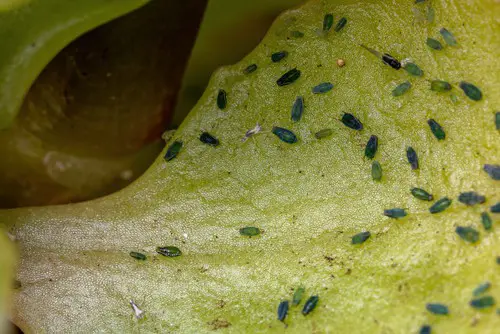
Lavender is a hardy plant that can thrive in a wide range of climates and soil conditions. However, there are several factors that can cause a lavender plant to deteriorate and eventually die. Understanding these causes can help gardeners take the necessary steps to save their lavender plants.
1. Overwatering or Underwatering
Both overwatering and underwatering can be detrimental to lavender plants. Overwatering can lead to root rot, which is caused by slow-draining soil or soil that is consistently wet. On the other hand, underwatering can cause the plant to dry out and eventually die.
To prevent overwatering, gardeners should ensure that their lavender plants are planted in well-draining soil. If the soil is consistently wet, gardeners can add sand or limestone to improve drainage. Underwatering can be prevented by watering the plant deeply but infrequently, allowing the soil to dry out slightly between waterings.
2. Improper Sunlight Exposure
Lavender plants require adequate sunlight to thrive. If a lavender plant is not receiving enough sunlight, it may become leggy and produce fewer blooms. Conversely, if a lavender plant is exposed to direct sunlight for too long, it may become stressed and eventually die.
To ensure that a lavender plant is receiving adequate sunlight, gardeners should plant it in an area that receives full sun for at least six to eight hours per day. If the plant is exposed to direct sunlight for long periods of time, gardeners can provide shade by using a shade cloth or by planting other plants nearby to provide natural shade.
3. Inadequate Soil Conditions
Lavender plants require well-drained soil that is slightly acidic. If the soil is too alkaline or too sandy, it can cause the plant to deteriorate. Additionally, if the soil is not fertilized properly, the plant may not receive the necessary nutrients to thrive.
To ensure that a lavender plant is planted in the proper soil conditions, gardeners should test the soil pH and add sulfur or other acidic materials if necessary. Additionally, gardeners should fertilize the plant with a balanced fertilizer that contains equal amounts of nitrogen, phosphorus, and potassium.
4. Pests and Diseases
Lavender plants are susceptible to several pests and diseases, including fungal diseases like septoria leaf spot and pests like aphids and other insects. These pests and diseases can cause the plant to deteriorate and eventually die if left untreated.
To prevent pests and diseases, gardeners should inspect their lavender plants regularly and remove any infected leaves or branches. Additionally, gardeners can use organic pesticides to control pests and fungicides to control fungal diseases.
Reviving a Dying Lavender Plant

If your lavender plant is showing signs of dying, don’t give up on it just yet. With proper care and attention, you can revive it and bring it back to full health. Here are some tips to help you save your dying lavender plant.
1. Correct Watering Techniques
One of the most common reasons why lavender plants die is due to improper watering. Lavender plants prefer well-draining soil, so make sure the soil is not waterlogged.
To water your lavender plant correctly, soak the soil well and then allow the top inch to dry out completely before watering again. If you are growing lavender in a pot, make sure the pot has drainage holes in the base and is at least 16 inches across.
2. Proper Sunlight and Temperature Management
Lavender plants need full sun to thrive, so make sure they are getting at least 6-8 hours of direct sunlight each day. If your lavender plant is not getting enough sunlight, it may become weak and susceptible to disease.
Additionally, lavender plants prefer warm temperatures and do not tolerate frost well. If you are growing lavender in a colder climate, consider bringing it indoors during the winter months.
3. Soil and Drainage Improvements
Lavender plants prefer well-draining soil that is slightly alkaline. If your soil is too heavy or clay-like, consider adding some gravel or sand to improve drainage. Additionally, you can add some organic matter or compost to the soil to help improve its structure and nutrient content.
4. Pruning and Maintenance
Regular pruning and maintenance can help keep your lavender plant healthy and prevent it from dying. Prune your lavender plant in the spring or fall to remove any dead or diseased branches. Additionally, make sure to remove any weeds or debris from around the base of the plant to prevent disease and improve air circulation.
By following these tips, you can revive your dying lavender plant and bring it back to full health. Remember to provide proper watering, sunlight, and temperature management, improve soil and drainage, and perform regular pruning and maintenance.
Preventing Future Lavender Plant Problems
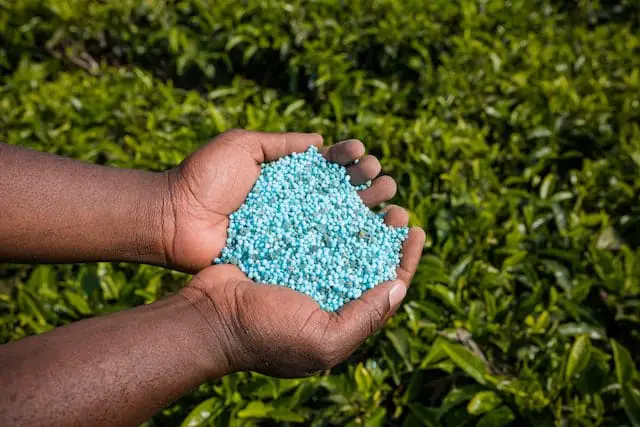
To ensure that your lavender plant stays healthy, there are several things you can do to prevent future problems. In this section, we will discuss some of the key factors to consider when caring for your lavender plant.
1. Choosing the Right Lavender Variety
Choosing the right variety of lavender is crucial for ensuring that your plant thrives. Some of the most popular varieties include English lavender (Lavandula angustifolia), which is a perennial that produces fragrant blue-purple flowers, and ‘Munstead’ lavender, which is a compact variety that is well-suited for growing in pots or containers.
2. Optimal Planting Techniques
Proper planting techniques are essential for ensuring that your lavender plant establishes itself well and stays healthy. When planting your lavender, make sure to choose a location that receives full sun and has well-draining soil.
Lavender plants do not do well in wet soil, so it is important to ensure that the soil drains well. If you are planting in a pot or container, make sure that it has drainage holes in the base.
3. Regular Inspection and Care
Regular inspection and care are essential for keeping your lavender plant healthy. Make sure to inspect your plant regularly for signs of pests or disease, and take appropriate action if you notice any issues. Additionally, make sure to prune your lavender plant regularly to encourage new growth and prevent leggy plants.
4. Fertilization and Nutrient Management
Proper fertilization and nutrient management are crucial for ensuring that your lavender plant stays healthy. Lavender plants require well-draining soil that is high in nitrogen, so make sure to fertilize your plant once a month using a balanced fertilizer.
Additionally, make sure to provide your plant with adequate water and nutrients, and avoid over-fertilizing, as this can lead to root burn and other issues.
By following these tips, you can help prevent future problems with your lavender plant and keep it healthy and thriving for years to come.
Benefits of Healthy Lavender Plants
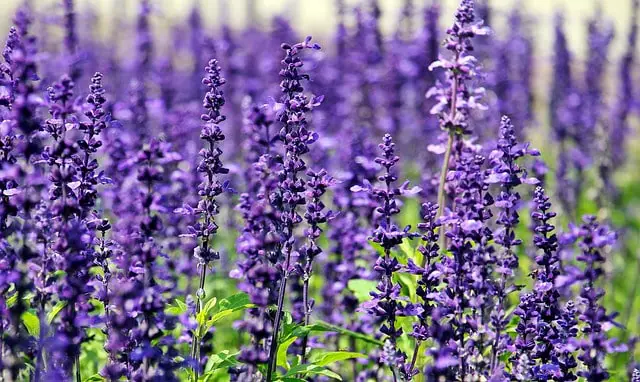
Lavender plants are not only beautiful additions to any garden, but they also provide a range of benefits. From their lovely fragrance to their oil production, lavender plants are an asset to any environment.
1. Fragrance and Aesthetics
One of the most notable benefits of lavender plants is their fragrance. Lavender has a sweet, floral scent that is both calming and uplifting. The fragrance of lavender can help to reduce stress and anxiety, making it a popular choice for aromatherapy.
In addition to their fragrance, lavender plants are also aesthetically pleasing. With their delicate flowers and soft foliage, lavender plants add a touch of elegance to any garden or landscape.
2. Oil Production
Lavender plants are also known for their oil production. Lavender oil is a popular ingredient in many beauty and skincare products, as it has a range of benefits for the skin. Lavender oil can help to soothe dry, irritated skin, and it also has antiseptic properties that can help to prevent infections.
3. Environmental Contributions
Lavender plants also have a range of environmental contributions. They attract pollinators such as bees and butterflies, which helps to promote biodiversity. Additionally, lavender plants are drought-tolerant, making them a great choice for water-wise gardening.
Frequently Asked Questions
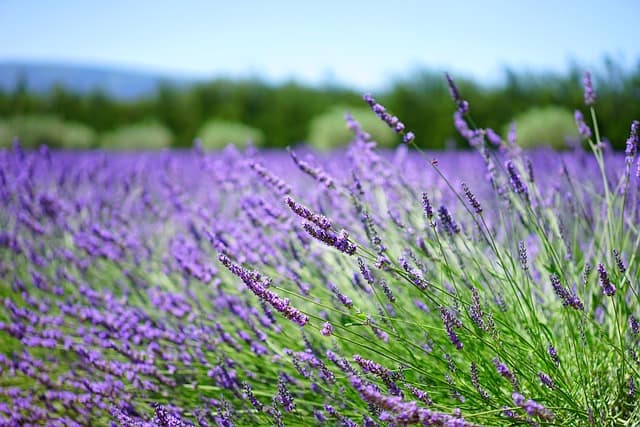
How do I revive a dried-out lavender plant?
If your lavender plant has dried out, it is important to rehydrate it as soon as possible. One way to do this is to give it a good soak in water for about an hour.
Afterward, remove it from the water and let it drain for a few minutes before returning it to its pot or planting bed. Be sure to water it regularly to prevent it from drying out again.
What are the signs of lavender root rot and how can I treat it?
Lavender root rot is a fungal disease that can cause the plant to wilt and die. Signs of root rot include yellowing leaves, stunted growth, and a foul odor coming from the soil.
To treat root rot, it is important to remove the affected plant from the soil and cut away any infected roots. Repot the plant in fresh, well-draining soil and reduce watering to prevent further damage.
How can I bring my lavender plant back to life after winter?
Lavender plants can suffer damage during the winter months, especially if they are exposed to frost. To bring your lavender plant back to life after winter, it is important to prune away any dead or damaged growth.
You should also fertilize the plant with a balanced fertilizer and water it regularly to promote new growth.
What should I do if my lavender plant is turning gray?
If your lavender plant is turning gray, it may be a sign of powdery mildew, a fungal disease that can affect lavender plants. To treat powdery mildew, it is important to remove any infected leaves and prune away any affected growth.
You can also treat the plant with a fungicide spray to prevent further damage.
Is it possible to save an overwatered lavender plant and how?
Overwatering can be just as damaging to lavender plants as underwatering. If your lavender plant is overwatered, it is important to remove it from its pot or planting bed and let it dry out completely.
Afterward, repot the plant in fresh, well-draining soil and reduce watering to prevent further damage.
Can a dead lavender plant be revived and how?
Unfortunately, if your lavender plant has died, it cannot be revived. However, you can prevent future plant loss by taking proper care of your lavender plants, including providing them with well-draining soil, proper watering, and regular pruning.

Hey, I’m Lisa and I’ve been an avid gardener for over 30 years. I love writing, talking and living in the garden! Feel free to connect with me on my socials below

